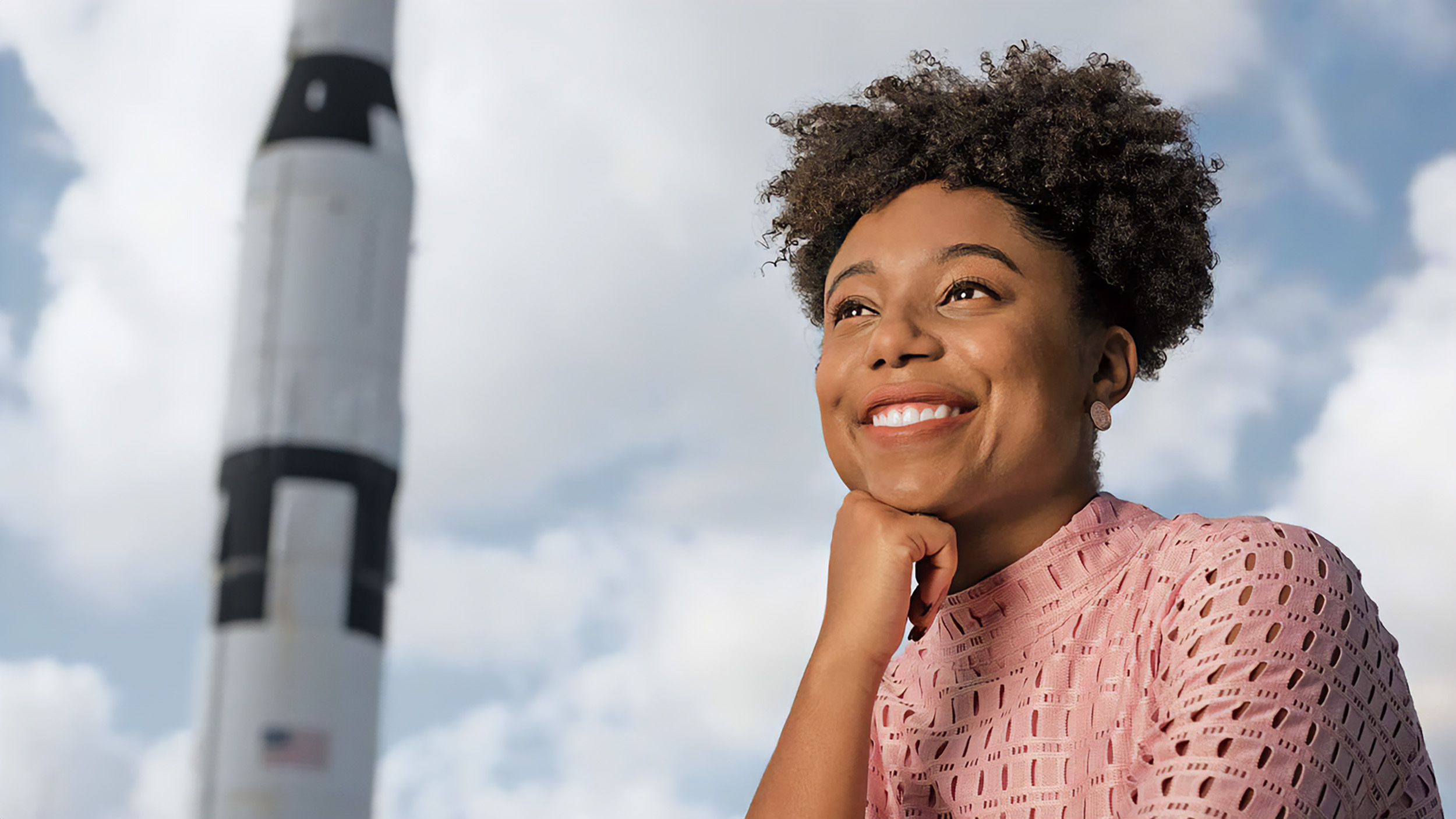Wonder woman of rocket science
Tiera Fletcher ’17

Tiera (Guinn) Fletcher ’17 decided to become a rocket scientist at age 11. Almost 16 years later, she’s helped bring to life one of the most powerful rockets ever built—NASA’s Space Launch System, which will send the Orion spacecraft and its crew into deep space.
“Having a role in bringing the rocket to this point—I felt like a rock star,” says Fletcher, now a project engineer at Boeing. “It nearly brings tears to my eyes, because I saw it start on paper, physically crawled into the engine section, helped integrate the pieces, checked and balanced it via documents, and approved it to travel to the Kennedy Space Center.”
Now 27 and a soon-to-be mother of three, Fletcher was first exposed to aerospace engineering through an outreach program Lockheed Martin held at her middle school in Georgia. She had always been into math and science. Grocery shopping with her mother, she would mentally calculate the tab before they got to the register. Her father, a construction worker, taught her how to build and problem-solve in physical space. But it wasn’t until the presentation that all those disparate-seeming interests merged into one dream.
That presentation also imprinted on her the importance of leadership and mentorship.
“People in the STEM field—we can’t underestimate the impact that we can have on a student,” says Fletcher, who earned an aero/astro degree at MIT. So she and her husband, fellow aerospace engineer Myron Fletcher, formed the group Rocket with the Fletchers to show kids from underrepresented groups what it’s like to be an engineer. They have an active social media presence and do speaking engagements sponsored by organizations like MIT’s Office of Engineering Outreach Programs and Disney Dreamers.
Fletcher has also coauthored the book Wonder Women of Science, which tells the stories of 12 “amazing scientists who happen to be women,” she says. In addition to herself, they include MIT Media Lab director Dava Newman, SM ’89, SM ’89, PhD ’92, a former deputy administrator of NASA, and Mareena Robinson Snowden, PhD ’17, the first Black woman to earn a PhD in nuclear engineering from MIT.
In the book, she admits that in her time at MIT she struggled to believe in her own abilities. “I would say, ‘You know what? Why should I even be an aerospace engineer? I might like it, but maybe I’m just not good at it.’ And my support system allowed me to pick myself back up,” she says. From professors and staff members to family and friends back home, a network of loved ones and mentors made sure she didn’t give up on her dreams.
Keep Reading
Most Popular
Large language models can do jaw-dropping things. But nobody knows exactly why.
And that's a problem. Figuring it out is one of the biggest scientific puzzles of our time and a crucial step towards controlling more powerful future models.
How scientists traced a mysterious covid case back to six toilets
When wastewater surveillance turns into a hunt for a single infected individual, the ethics get tricky.
The problem with plug-in hybrids? Their drivers.
Plug-in hybrids are often sold as a transition to EVs, but new data from Europe shows we’re still underestimating the emissions they produce.
Google DeepMind’s new generative model makes Super Mario–like games from scratch
Genie learns how to control games by watching hours and hours of video. It could help train next-gen robots too.
Stay connected
Get the latest updates from
MIT Technology Review
Discover special offers, top stories, upcoming events, and more.